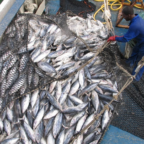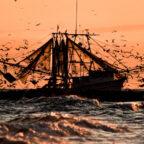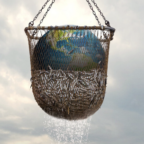Overfishing: Can We Ever Reverse the Damage We’ve Done
January 9, 2020
Posted in News

The global numbers regarding fishing have gone from sustainable to straight-up devastating in just a few decades. Now, the creatures of the water have to fear about two more things in addition to human-made disasters – the rising water temperatures and plastic. There is no harm in fishing. It actually helps the marine ecosystem by keeping the aquatic population in check. But there is a difference between justified consumption and exploitation. And it seems that the differences are just a blur to us.
How severe is overfishing?
In just half a century, over-fished stocked grew triple its size. Its effects pushed one-third of the global fisheries to their biological limits.
Even if one species of fish gets wiped off from the earth, it is going to have a very drastic effect on the marine ecosystem.
What is overfishing?
Defining overfishing is simple. It happens when you catch fishes to the extent that there is not enough breeding population to fill the gap. And the next wave of fishing will further catch more breeding pairs, creating a chain of events where the fish population spirals down uncontrollably.
The brief history of whaling: pushing Cetaceans to the verge of extinction
Man’s desire to catch rare and magnificent forms of fishes began when we started to conquer the waters. However, the requirement of fish for industrial purposes first created the global epidemic. Whaling saw a rapid rise in the mid-19th century, where we embarked on a journey to find blubber. During the Antarctic season in 1927, a total of 13,775 whales were killed. Two years later, in 1929, the number of whales killed rose to 40,201.
Even with the International Agreement for the Regulation of Whaling signed in London in 1937, that same year saw the highest ever record of 46,039 whales being killed for their fat, meat, and bone.
The whaling practices of this era were so devastating that it pushed eight species of whales to the endangered list in 1970. Whaling was officially outlawed in the US during the year 1971.
As of 2019, 87 Cetacean species out of 90 were evaluated for the IUCN’s (International Union for Conservation of Nature) Red List. Out of them, three species are critically endangered, and ten are endangered.
It is quite depressing to know that we did this in the last 200 years.
Where are we currently on overfishing?
In just a matter of 55 years, overfishing has wiped out 90% of the apex level predators in the sea. It is an issue that needs much attention because we are disrupting the balance of the oceanic food chain.
Another troubling case with fishing en masse is that you don’t always get the fish that you are looking for in the fishing net. Almost always, there will be other types of marine life that will get picked up by the net.
For example, Dolphins were often caught in the nets meant for tuna fishing. Even though untargeted fish gets tossed into the ocean, they may be already dead or on the verge of dying.
Fishers now use a special type of net that is big enough so that dolphins can escape. You might have seen a tag saying “Tuna Safe” labeled on tuna cans.
This label implies that the fisher has used dolphin-safe nets.
In the year 1989, fishing industries around the world took out a whopping 90 metric tonnes of fish from the ocean. From then onwards, we have seen a stagnation in the replenishment rate of fisheries.
In other words, we may have pushed the oceans to its limits already.
What can we do to stop overfishing?
We can stop overfishing only when the governments of the countries around the world actively push for regulations on fishing. For this to happen, governments have to acknowledge that overfishing is a major problem in the first place.
There are have been several initiatives from governments and private institutions around the world. The most effective of them is the Annual Catch Limits.
These are hard cap limits that are fishers must obey.
The next step is to protect fishes during breeding time. When fishing reduces during the breeding season, it significantly increases the chances of filling the population gap.
By incorporating such methods, we end up with something called sustainable fishing. And this is the best chance that we have to revive the ocean life.
Sustainable fishing
Sustainable fishing aims to guarantee that the marine life thrives and not just barely makes it. Hence, it is vital to know the difference.
The population of species must not be kept at the extinction edge because if an epidemic falls on them (that may or may not be from humans), it could wipe out entire species.
Sustainable fishing allows a healthy fish population for today’s human consumption as well as for the future generation. Currently, we remove about 77 billion kilograms of marine life from the ocean each year.
In these desperate times, we must examine the traditional fishing methods from the Philippines or Polynesian cultures where they hunt different types of fish in different seasons, ensuring breeding time for all kinds of fishes.
Some experts are also of the opinion that the world needs to slow down on its consumption of fish. And this can be done to an extent, but may not be a practical option since it requires cooperation from all the countries.
Conclusion
Overfishing has left a mark on the oceanic world that still burns and bleeds. It is time for people and the government to act and bring about change.
The oceans have a fine-tuning like everything else in nature, and what we do interferes with that balance.
RELATED: DEAD PREGNANT WHALE FOUND WITH 48 POUNDS OF PLASTIC IN STOMACH
The lowering number of fish life has innumerable effects not just on their ecosystem but also on ours. The rising number of jellyfish is a testament to the lack of predatory animals in the sea.
Our world is in our hands, and it is high time we stand up for the ocean and the precious lives it harbors.
Source
















Social Profiles